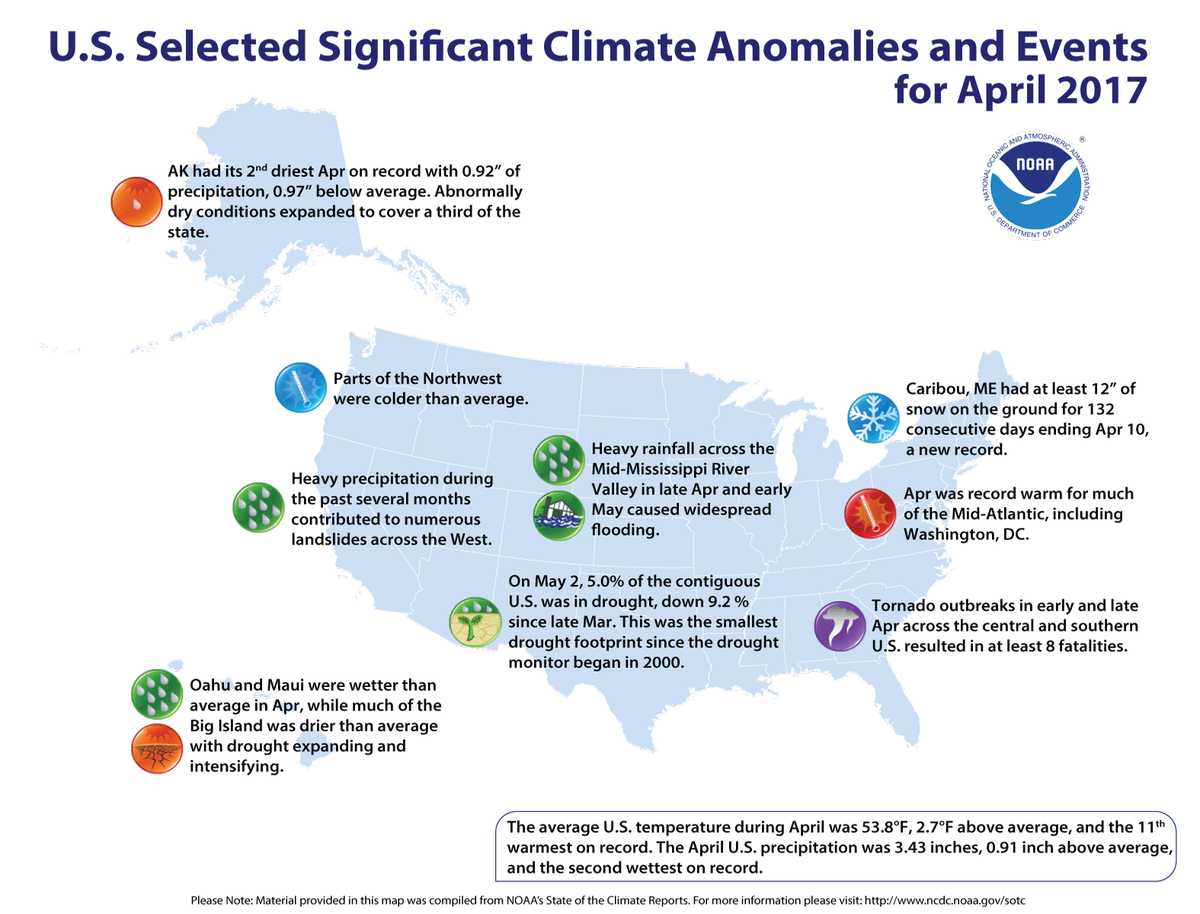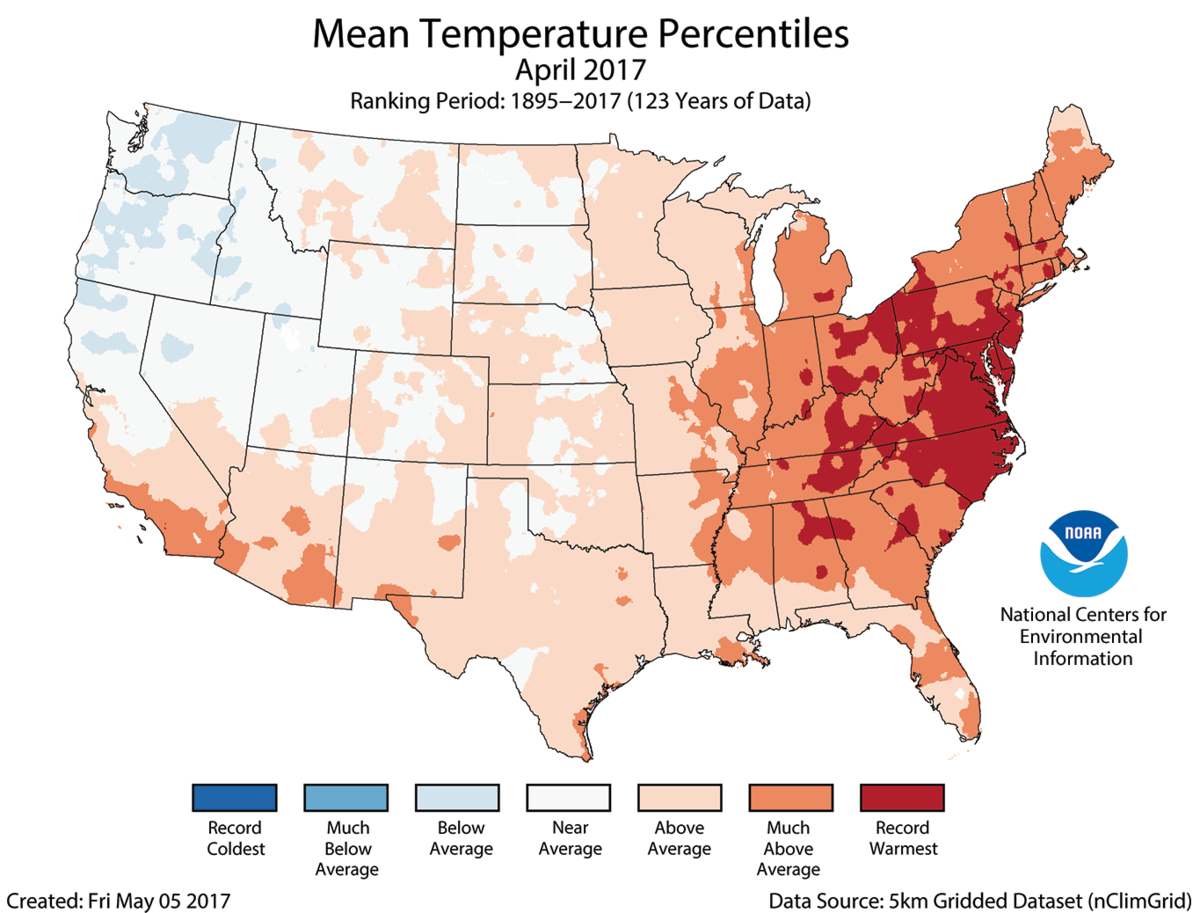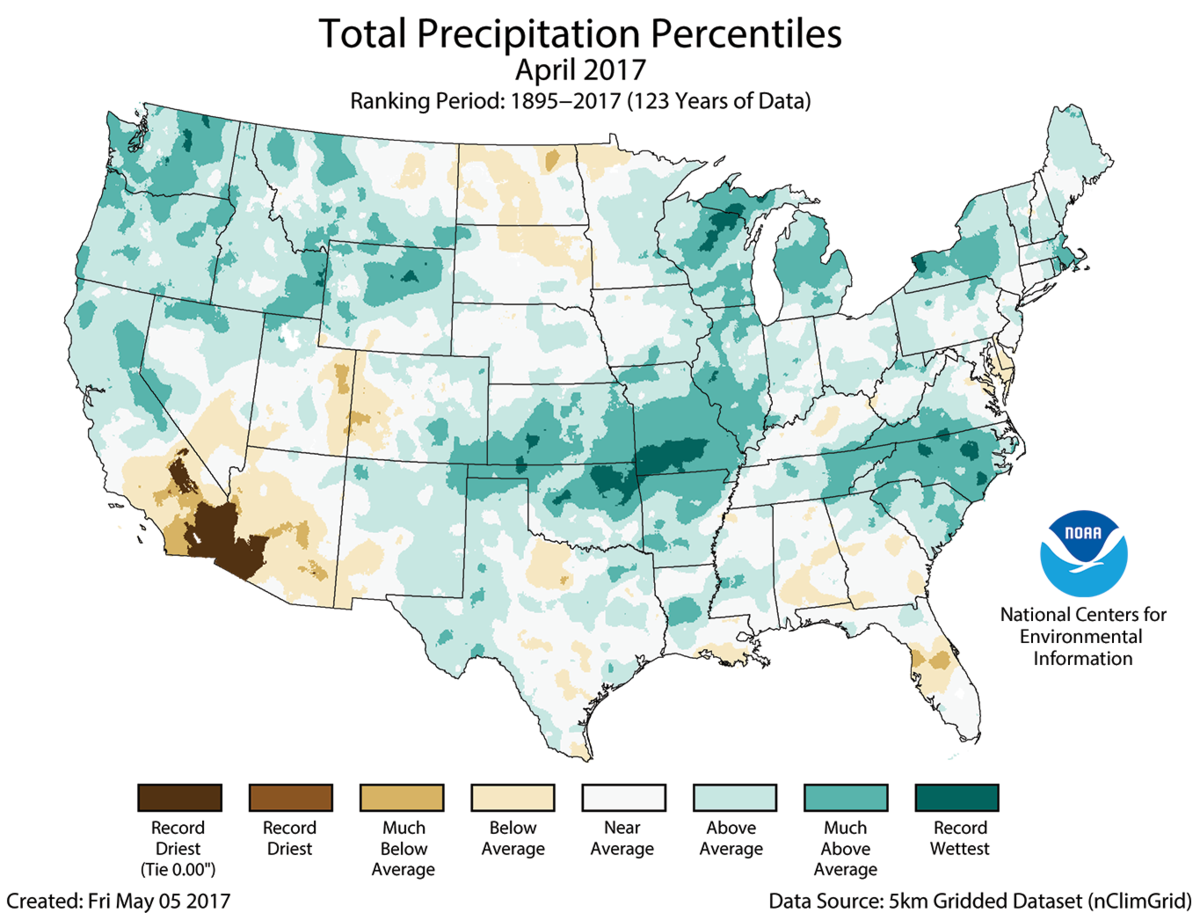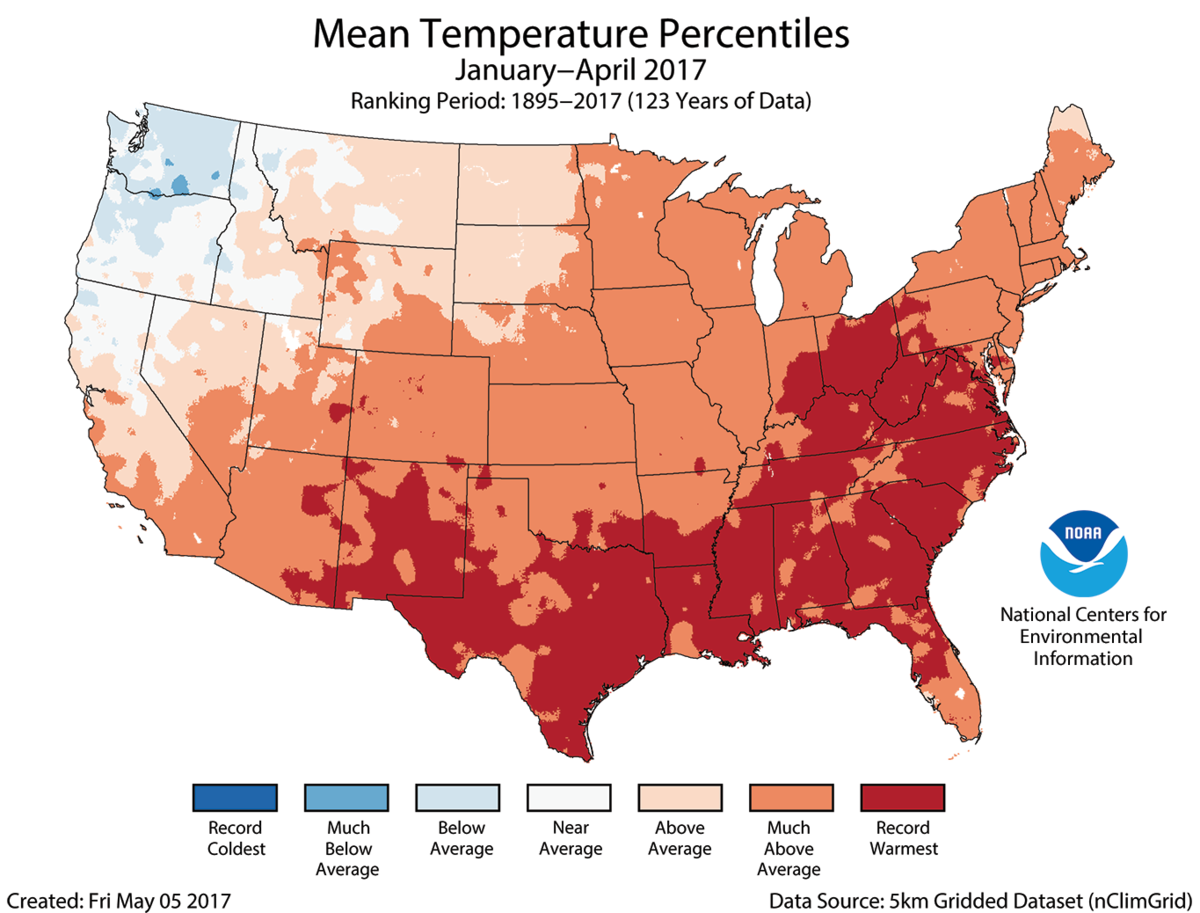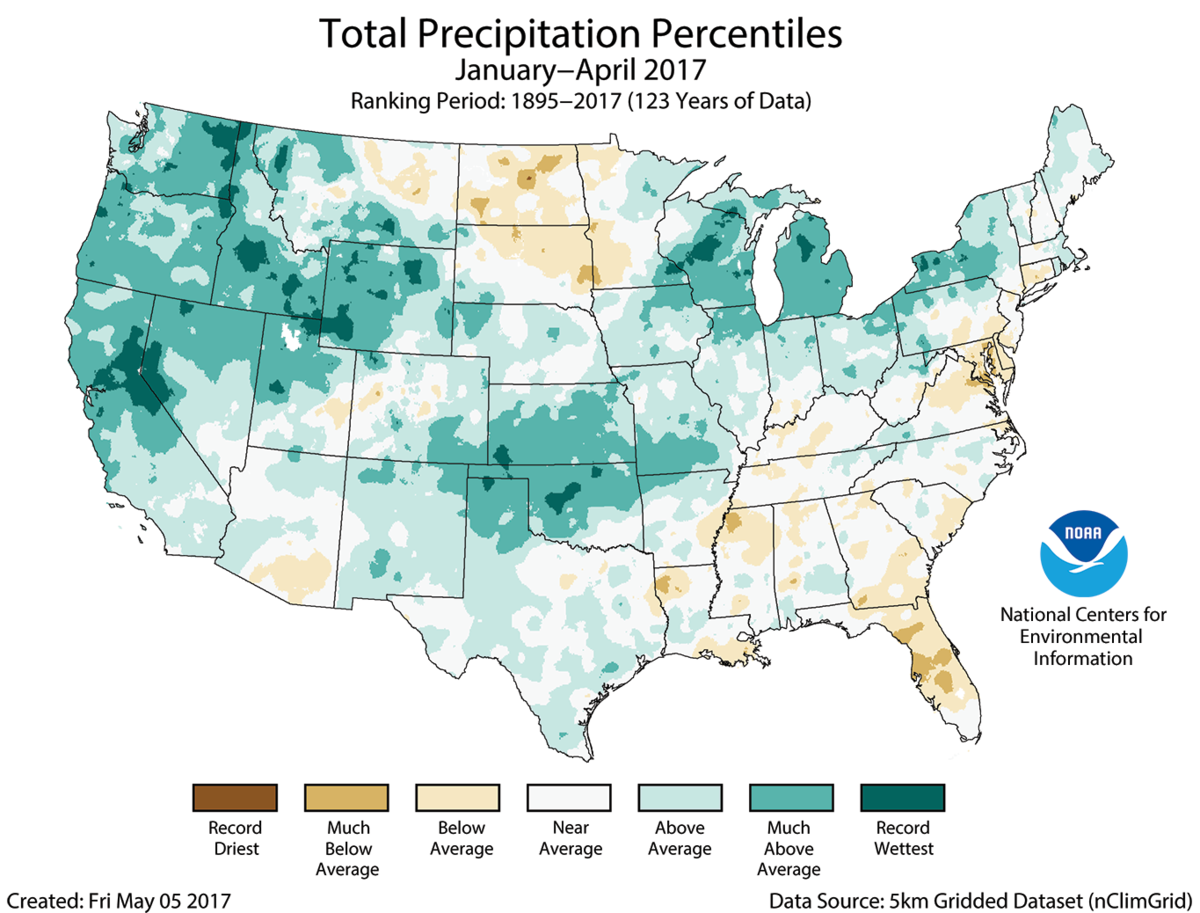The contiguous United States had its 2nd wettest and 11th warmest April
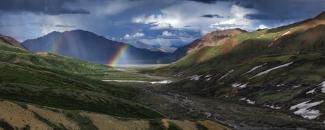
The average temperature for the contiguous U.S. was 53.8°F, 2.7°F above the 20th century average during the month of April. This was the 11th warmest April on record for the Lower 48 and warmest April since 2012. Much-above-average temperatures spanned the East, with record warmth in the Mid-Atlantic and Ohio Valley. The year-to-date average temperature for the contiguous U.S. was 43.7°F, 4.5°F above average. This was the second warmest January-April, behind the record of 44.7°F set in 2012.
The April precipitation total was 3.43 inches, 0.91 inch above the 20th century average, making it the second wettest April in the 123-year period of record. Much-above-average precipitation fell across the Northwest, Central Plains, Mid-Mississippi Valley, Great Lakes, and Mid-Atlantic. The year-to-date contiguous U.S. precipitation total was 11.46 inches, 1.99 inches above average. This was the fifth wettest January–April on record and wettest since 1998. Based on the U.S. Drought Monitor, 5.0 percent of the contiguous U.S. was in drought, the smallest drought footprint reported by the U.S. Drought Monitor since its inception in 2000.
See all April 2017 and year-to-date U.S. temperature and precipitation maps.
This monthly summary is part of the suite of climate information services NOAA provides to government, business, academia, and the public to support informed decision-making.
April Temperature
-
Locations from the Mississippi River to East Coast were much warmer than average. Delaware, Maryland, New Jersey, North Carolina, Ohio, Pennsylvania, West Virginia, and Virginia each had their warmest April on record. The average April temperature for Washington, D.C. was also record high at 63.8°F, 1.8°F warmer than the previous record set in 1994. Reliable temperature data for D.C. date back to 1872.
-
Near- to below-average temperatures were observed across the Northwest, Great Basin, Northern Rockies, and Northern Plains. For the third time this year, the Washington state monthly averaged temperature was below average.
-
The Alaska statewide average temperature was 29.9°F, 6.6°F above average. This was the sixth warmest April in the 93-year record for the state. Above-average temperatures spanned Alaska during April, with much-above-average temperatures across the southern third of the state.
April Precipitation
-
Above-average precipitation was observed across a large portion of the nation, including much-above-average precipitation in the Northwest, Northern Rockies, Central Plains, Mid-Mississippi Valley, Mid-Atlantic, and Great Lakes. Record precipitation was observed in parts of the Northwest, Southern Plains, and Mid-Atlantic. North Carolina had its wettest April on record with 6.75 inches of rain, 3.22 inches above average. Below-average precipitation was observed in parts of the Southwest and Northern Plains.
-
Several storm systems impacted the Southern Plains and Mid-Mississippi River Valley in late April with the precipitation continuing into May, resulting in widespread flooding across the region. At the time of this report’s release, at least five fatalities were attributable to the flooding with significant impacts on agriculture.
-
During April there were over 200 preliminary tornado reports, continuing an active tornado year. Large tornado outbreaks impacted the central and southern U.S. in early and late April resulting in eight tornado-related fatalities in Louisiana, South Carolina, and Texas.
-
-
Alaska had its second driest April on record with 0.92 inch of precipitation, 0.97 inch below average. Only April 1932 was drier with 0.84 inch of precipitation. Record and near-record dry conditions were observed across the central and eastern parts of the state. April is climatologically the driest month of the year for Alaska.
-
According to the May 2 U.S. Drought Monitor report, 5.0 percent of the contiguous U.S. was in drought, down 9.2 percent compared to the March 28 values. This is the smallest drought footprint reported by the U.S. Drought Monitor since its inception in 2000. Drought improved across the Great Plains, Mississippi River Valley, interior areas of the Southeast, and Northeast. Drought worsened in the Southwest and across parts of the Southeast where several large wildfires burned in Florida and southern Georgia.
Year-to-Date Temperature
-
Above-average temperatures spanned the nation with only the Northwest being colder than average. Forty states were much warmer than average during January–April with 14 states record warm. Record warmth stretched from the Southern Rockies to Southeast and Midwest.
Year-to-Date Precipitation
-
Above-average precipitation spanned most of the West into the Great Plains and Great Lakes. Seven states in the West, three in the Great Plains and two in the Great Lakes had year-to-date precipitation totals that were much above average. Idaho had its wettest January–April on record with 15.17 inches of precipitation, 5.42 inches above average, and 0.12 inch above the previous record set in 1904. Below-average precipitation was observed in the Northern Plains, Northeast, and Southeast.
Extremes
-
The U.S. Climate Extremes Index (USCEI) for the year-to-date was more than twice the average and the highest value on record. On the national scale, extremes in warm maximum and minimum temperatures, one-day precipitation totals, and days with precipitation were much above average. The USCEI is an index that tracks extremes (falling in the upper or lower 10 percent of the record) in temperature, precipitation, and drought across the contiguous U.S.
The full U.S. report will be released on May 11.

